As a vegetarian, the traditional foods in Ecuador and Peru presented a challenge, as they focus heavily on meat. The national dish of Peru is “cuy chactado,” or fried guinea pig. Most Peruanos and Ecuadorianos who live in the highlands raise guinea pigs in pens beneath their homes in order to have a ready supply of this delicacy, which is served for special occasions and on holidays. In one such home I picked up one of the fuzzy little creatures, which promptly crawled onto my shoulder and nuzzled my ear. After that, even if I hadn’t been a vegetarian, the idea of eating guinea pig would have been appalling, however I’m sure Hindus feel the same way about Americans who eat beef, so I make no judgments.
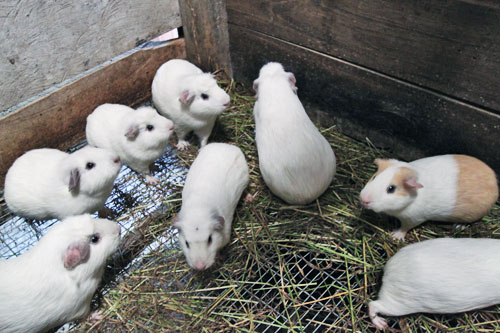
Fortunately, I discovered plenty of vegetarian choices, as well as seafood options, which I will eat if absolutely necessary:
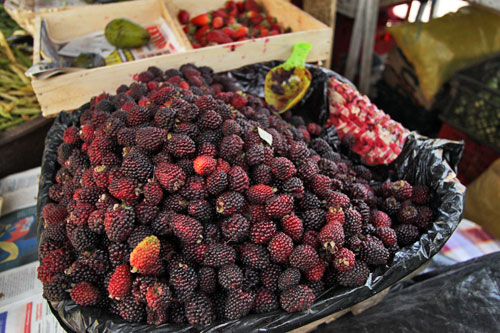
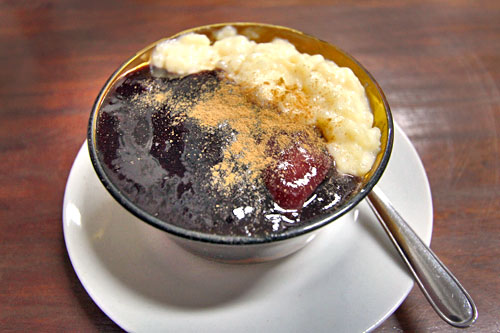
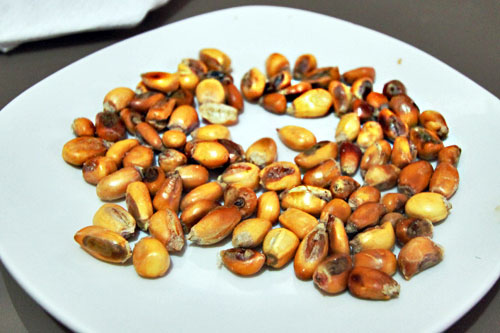
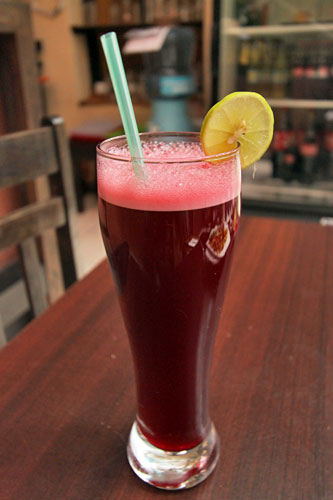
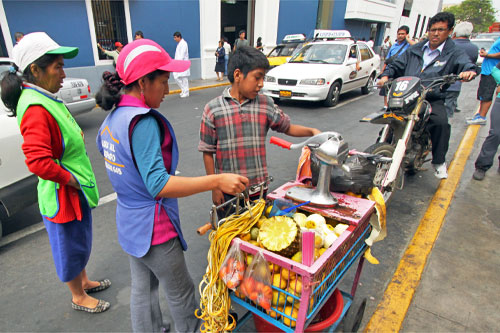
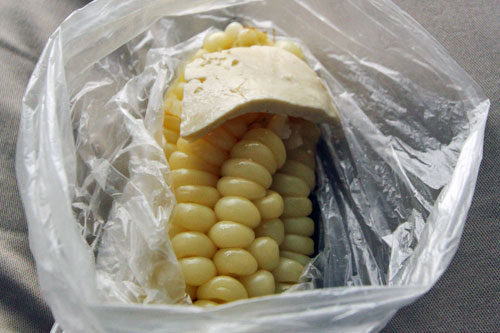
In Cuenca I discovered a tiny little pastry shop that specialized in Alfajores, which consist of two or more layers of baked pastry, filled with either manjar blanco (a caramel-colored, sweet, creamy filling made with milk and sugar) or molasses.
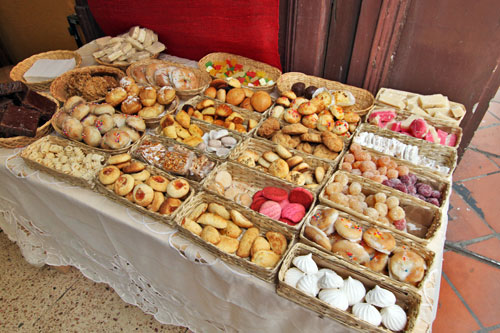
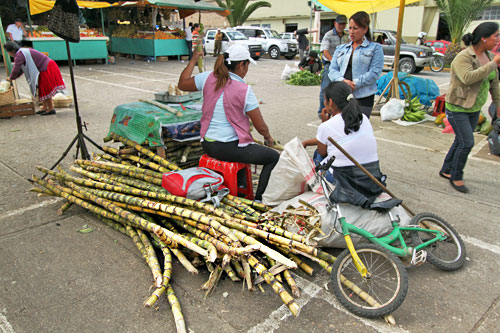
The seafood on the coast of Ecuador was some of the delicious I’ve ever tasted. It is sometimes served with a “Maní” sauce, which is made from peanuts, another local staple. Maní was also incorporated into desserts and salad dressings, and each version was delicious.



Peru is famous for its Ceviche, which contains bite-size pieces of raw white fish marinated in lime juice and spicy chiles. The varieties are endless, but often contain giant steamed corn kernels, raw onion slivers, and boiled sweet potatoes (camote). I was fortunate to sample two of the more popular Ceviche recipes, as well as the traditional dishes of Tacu Tacu and Causa, when friends from Lima invited me to spend the day at their private club, the Rowing Club of Lima:

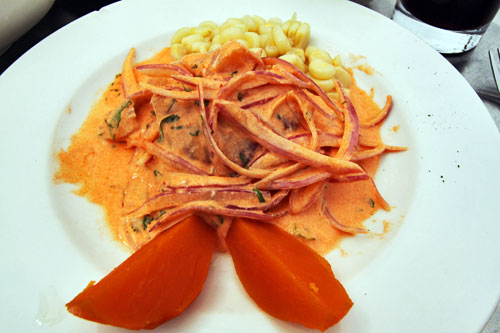

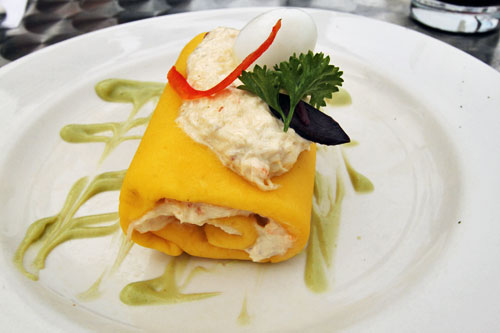
In Cusco, after a slow start during which I nearly starved, I discovered two restaurants that had delicious vegetarian cuisine, such as this Verduras Revueltas Cuscano (Cusco scrambled vegetables), which was made with 100% organic vegetables from local gardens and eggs from free-range chickens:
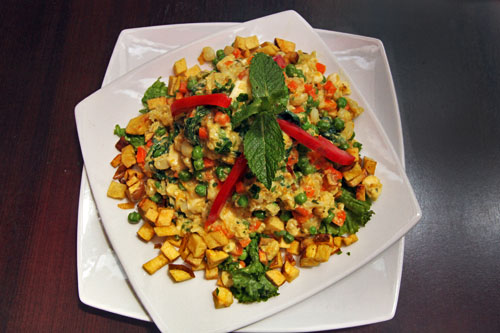
Potatoes originated in the Andes regions of South America. Today, an unbelievable 8,000 varieties are still grown in the Andes and the myriad shapes, sizes, and colors of potatoes available in local produce markets are absolutely mind-boggling. No surprise that much South American cuisine relies on this staple, such as this Papas a la Huancaína (Huancayo-style potatoes):
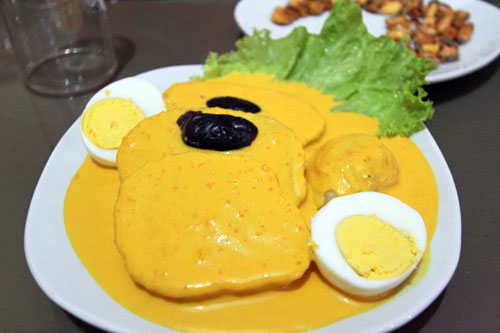
For the longest time I didn’t know what Habitas were; I just knew I craved them. Vendors would board the buses I rode around Ecuador and Peru, hawking plastic packages full of these popular snacks for what amounted to about 50 cents. I later learned that they are Fava beans, usually deep fried in peanut oil and then lightly salted:
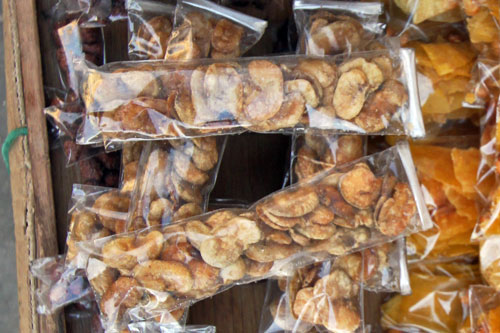

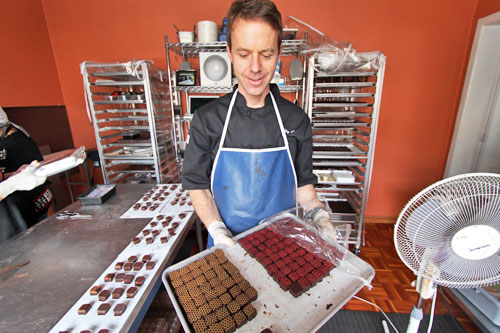
Some days I was so hungry that I forgot to take photos of my meals before eating, so you will just have to take it on faith (without a mouth-watering photo) that visitors to Ecuador and Peru should also try the following:
- Guanabana juice, squeezed from a semi-ugly, bumpy globular fruit with milky white flesh. It’s absolutely exquisite
- Pan de Yuca (cassava): bread made from this starchy tuber is moist and full of good things for the body; I found this bread mostly in Ecuador. In Peru, cassava is used to make a soup known as Yuca chupe.
- Lúcuma ice cream, made from the exotic Lúcuma fruit that is almost exclusively found in Andes regions. Not to be missed.
Happy eating!

These foods look interesting to taste. Now, I’m feeling hungry…
I´m so hungry reading this. When I´m in Peru I try to eat everything and forget about the diet… Lucuma ice cream and other lucuma desserts are found everywhere in Lima and the Peruvian coast, but it´s a seasonal fruit, so if you are lucky enough to get the real thing, by all means, taste a little bit of the many desserts with lucuma as the star. They are soooo good. Thanks for sharing this delicious post.
Peru Delights – you are SO right. I had lucuma ice cream and it was delicious!!!
Wow,
great Peru dishes…
i like all dishes…
praveen
mytravelo.com
i hope u visit
I’m totally craving a Mazamorra Morada right now 🙂
I have tried about 1/3 of what is presented in here. I need to get out and eat more Peruvian food. :0)
Hi Ruth: I’m jealous you can do that – no way here in Atlanta, and tomorrow I go to Asia for several months. I’m already craving Chica Morada. Have some for me!
I am soon see
Wow – it may not be 10 am yet, but I am suddenly hungry!
Ecuador actually has a lot of traditional dishes that are vegetarian. I wish I had known before you left I could have given you some tips like Locro which is an avocado potato soup. Depending on whether you are in the highlands or coast, plantains are also used quite a bit, one of my favourite dishes was a slice of plantano that was cooked and in the middle was a slice of cheese. Or you can also get vegetarian bolon de verde. This brings back such good memories.
I spent 3 months in Ecuador so after eating all that pork I sought out a lot of meatless dishes. I’m not sure if you have been to Cuenca yet but they have 3 vegetarian restaurants, one of them is so good that even the locals who normally eat meat go there.
Hi Ayngelina: I had Locro in Quito and it was delicious. Also had roasted plantains at every opportunity – I just LOVE them! Didn’t run into bolon de verde, though. And in Cuenca, the most popular vegetarian restaurant wasn’t open when I was there, but had dinner at Tiesto’s, which did have veggie options, and have to say that it ranks right up there with the best restaurants in the world.
I had about 3/4 of what you photograph, some bring back great memories. The seafood was superb around the coastlines. Somehow I missed the purple corn drink which looks really tempting. I did have cuy (http://www.travel-wonders.com/2009/03/potatoes-with-your-guinea-pig-sir-peru.html). Cuenca and Lima also offered superb gelato-like icecreams rich with fruit flavour. I admire your persistence wtih vegetarian food in countries that don’t tend to naturally offer such meals. I’m sure it helps unearth some tasty dishes that would otherwise remain undiscovered.
Ah Mark! You’re going to have to go back just to try the Chicha Morada. It’s superb.
thanks for sharing would love to visit and sample – great insight into the cuisine
Wow. This post has made me so hungry right now (minus the guinea pig)! If only I could hop a plane, I could be eating in Peru or Ecuador by dinner time. Of course, cuy chactado has me very interested in knowing whether or not you tried it and what you thought about the taste.
Hi Ronnie: As a vegetarian I had to pass on the cuy, but I tried everything else in the article!
It’s good to see that there are so many delicious vegetarian options. My wife prefers not to eat meat, so now I know it’s a “food safe” country for us to travel to. It’s my first time reading your blog, so sorry I didn’t catch that you were vegetarian. I look forward to reading more. Cheers.
No problem Ronnie. I did have trouble finding good vegetarian food in some places, but after I was there for a few days I was always able to nose out the veggie options. That’s why I’ve started putting information at the bottom of my posts, to help other vegetarian find places to eat and everyone find great places to stay. Thanks for reading!
Great post! I’m currently reading a few books about Peruvian cuisine for my upcoming trip. Seems like such a fascinating culinary scene!. Can not wait to try everything I can! 🙂